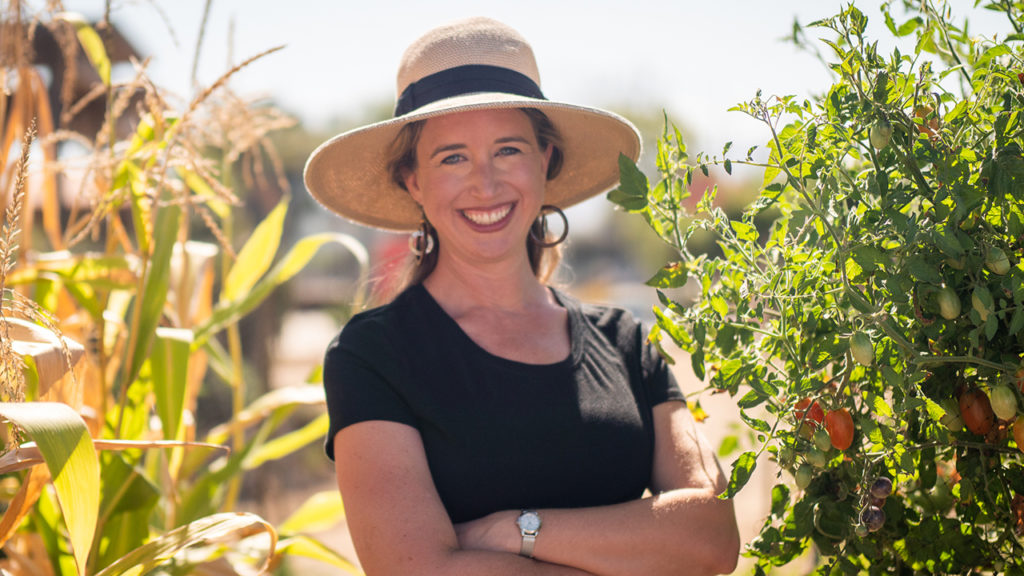
I remember my first garden. It was one of the first home projects I did in my post-college townhouse. We might not even have had furniture yet, other than the plastic pool lounge that served as our couch and the folding picnic table in the kitchen.
My “backyard” was all of 20×16 square feet and part of it was paved. Little did that stop me from heading to the nursery and filling my trunk full of baby plants. Each one looked so enticing! How could I say no?
What I don’t remember from that first garden is much produce. Instead, I remember a crowd of leggy vines and learning what black spot, aphids, and Japanese beetles look like. And naively throwing a white powder over all of it in hopes that the problems would go away.
That was an inauspicious beginning. But things could only get better from there! Every year that I’ve gardened, I’ve learned something new. I’ve learned what works and what doesn’t—usually by trial and error, but occasionally I meet up with a garden-whisperer who overflows with insight and how-tos.
In recent years, I have been soaking up info about regenerative organic agriculture and dynamic agroforestry, two concepts that Dr. Bronner’s Special Ops team (yes, we have one) have been working to implement with farmers around our fair trade oil mills in Sri Lanka and Ghana. The more I hear about these agricultural mouthfuls, the more entranced I become. It is a return to the older ways of working with nature instead of against it, mimicking nature who has so well perfected the art of surviving and thriving, if only we let it.
Because of regenerative organic agriculture, lush, productive acres are emerging from dried, depleted farmland. Resources are used in a full circle with no beginning or end, which means no waste. Farmers are rising out of poverty with steady and secure income, access to markets, and most importantly, a voice in their own future. There’s even a reversal of climate change from pulling carbon out of the air and putting it back into the soil where it belongs. Seriously exciting stuff!
All this has given rise to the new gold standard in ingredient certification: Regenerative Organic Certified, with its three levels of recognition, gold, silver, and bronze. (Three of Dr. Bronner’s ingredients achieved ROC silver certification in the program’s pilot audit: palm oil, coconut oil, and peppermint oil.)
Lately I have wondered how the principles of regenerative organic agriculture apply in a home-sized garden, whether that’s a pot on the patio or a collection of raised beds (what I have now) or a small field that feeds a household through the year.
I enlisted the wisdom of farmer Mat Ladegaard whose Ground Stone Farm, at an elevation of 7000 feet in the mountains of New Mexico, is a large market garden that he and his wife Nina have been bringing back to life (Get it? Regenerating?) over the past several years. Enjoy the pictures throughout the article from their farm. At 7000 feet, summers are hot and winters are cold. Water is scarce. Mat shared with me that farming is all about nurturing the soil. The five tenets of soil health, outlined in regenerative organic agriculture, are completely applicable to any size garden.
“If you take care of your soil,” Mat said, “it will take care of your crop.” That’s now my new mantra. Whether you’re the home gardener or the thousand acre farmer, the focus must be on the soil. Healthy plants come from healthy soil. The soul and life of the garden is in the soil.
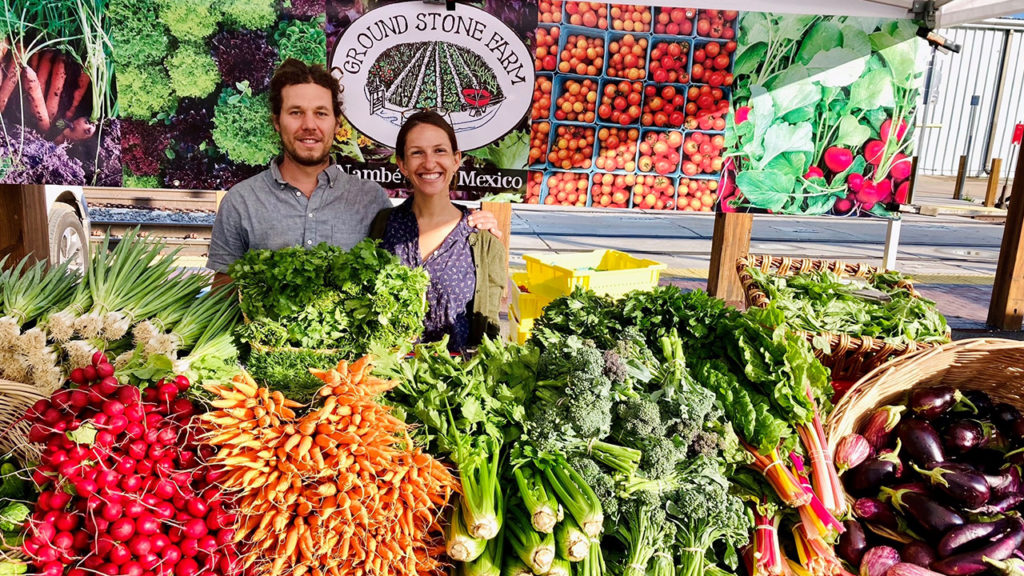
The Five Tenets of Soil Health & How To Apply Them at Home
1. Keep the soil covered
Protecting the soil is a key component of regenerative organic farming. Covering the soil prevents soil erosion, keeps weeds from gaining a foothold, and limits water loss through evaporation. By keeping the soil from drying out, the life continues to thrive beneath the surface.
Covering the soil is key both between seasons and during growing seasons. Between growing seasons, introduce cover crops or cover the soil with layers of organic matter such as the chopped remains of the previous crop, hay, or even cardboard. A cover crop is a low growing crop, such as legumes (think beans) which also infuse the soil with plant-loving nitrogen.
During the growing season, keep the ground between the main plantings covered with landscape fabric; quick crops like radishes; mulch; or the trimmings of other healthy plants. Such trimmings eventually break down into that black gold: humus. In the meantime, they insulate and protect the ground until their nutrients return to the soil. Full cycle. No waste.
Leaving the soil unplanted and uncovered is like leaving it naked and exposed. All manner of harm can come to it! In hot dry areas, the soil will simply die. In moister climates, invasive species will take over. Keep it covered.
Application for the home garden:
- Plant cover crops. This University of Wisconsin guide is a great how-to for home use.
- Cover soil between seasons with trimmings, spent plants, hay, mulch, or cardboard
- Lay down landscape fabric around plants.
- Leave prunings on the ground to degrade into humus.
- If your garden is going to be dormant for a while, chop up the last season’s spent plants and leave them over the soil.
2. Limit tilling and soil disturbance
This supports the regenerative organic farming principle of “conservation tillage”: minimally disturbing soil to maintain soil microbial communities and structure, while preventing carbon loss into the atmosphere. Tilling is the practice of turning over and breaking up the soil. The purpose behind tilling is to loosen the soil so that roots and water can penetrate. Hard packed land does not grow good crops.
The drawback of tilling is that a lot of the good life—the beneficial microbiome—of the soil thrives in the dark seclusion under the earth. By upending this earthy realm, all this life gets exposed to air and sunlight, where it quite likely will die or at least weaken. Furthermore, when the underlayers of soil are exposed, a lot of carbon releases from the soil into the air, not only contributing to greenhouse gasses, but also depriving the soil of a needed nutrient. When this carbon loss happens on thousands of acres, it adds up to a lot of misplaced carbon.
Instead of tilling, Mat uses a flail mower to chop up the past crop and put a layer of organic matter over the top of the soil. Then he uses a broad fork (I had to look up what that was) to break up and aerate the soil with minimal disturbance.
Application for the home garden:
- Use a broadfork or a hand fork to loosen and aerate soil.
- Avoid disrupting soil microbiome with excessive turning.
- Leave roots in the ground. Cut spent plants a few inches above the ground.
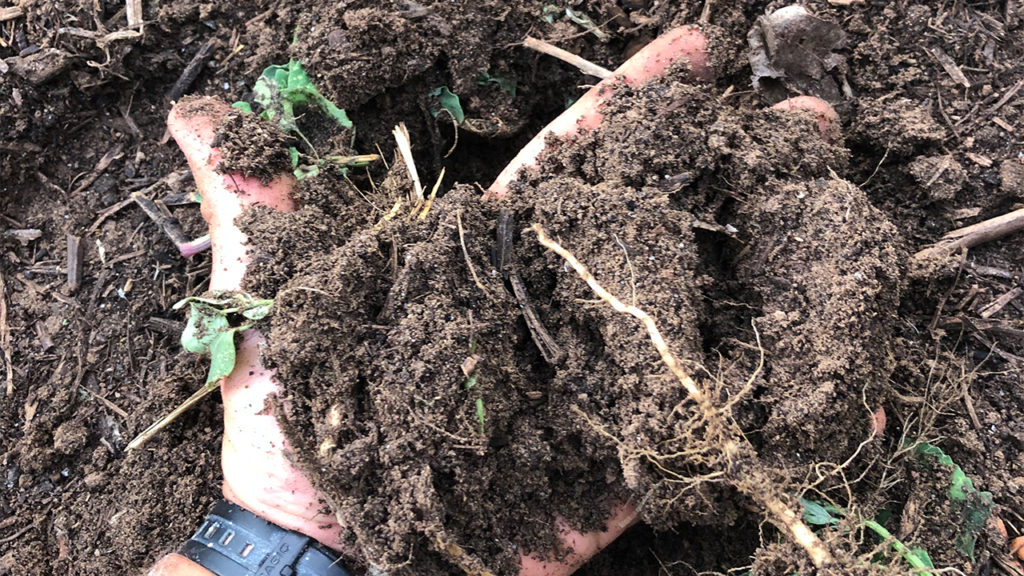
3. Maximize diversity
Biodiversity is the hallmark of regenerative organic agriculture. Diversity can be found both in the variety of plants in one planting region, and in rotating crops through one planting region so there isn’t a repeat of crop types.
This is the opposite of conventional agriculture where you find vast monocultures, with the same crops grown on the same land, year after year, stripping the land of a narrow range of nutrients through overdemand, and attracting wave after wave of pests eager for that one crop. When crops are comingled and rotated, it keeps the pests on the move as well.
Again, look at nature for the example. Nature grows and thrives in diversity. Rachel Carson, author of the landmark Silent Spring, reminds us, “In nature nothing exists alone.” There’s a reason for that. Plants are stronger when grown in a community. These communities are resilient.
Dynamic Agroforestry (DAF) is a technique that stems from the goal of diversity. DAF strategically intersperses myriad species so that the result looks almost like a naturally grown forest. Plants abound at every level from ground-hugging cover crops to towering timber trees. The different species protect and strengthen each other, cover the land, crowd out invasive weeds, and provide relieving shade. Different crops ripen for harvest all throughout the year, providing farmers with year-round marketability.
My colleague Gero Leson, Dr. Bronner’s VP of the aforementioned Special Ops team, trains farmers in DAF, which he described in his book Honor Thy Label. “Dynamic Agroforesty aims to optimize the output of the entire system, rather than the yield of a single species.”
Gardening is a bit like writing a symphony. Individual elements work together, play off each other, complement each other’s strengths, and bolster each other’s weaknesses, so that the whole is far greater, far stronger, and far more beautiful than the sum of its parts.
Application for the home garden:
- Companion plant—even in pots! Here’s an excellent guide for which make good companions and which don’t.
- Tuck fast growing crops, like radishes, between slow growers like squash. The radishes will be harvested long before the squash needs the space, and in the meantime will protect the land from water loss and invasive weeds.
- Try out the Three Sisters combo of corn (tall), squash (moderate), and beans (ground cover) developed by indigenous peoples of North America. Beans (legumes) also infuse nitrogen into the soil.
- Space plants according to your local climate. Dry areas benefit from plants being close together to hold in moisture. Humid areas benefit from more space between plants to promote air flow and reduce fungal issues.
- Rotate crops from season to season to maintain soil health, even if you’re growing in pots.
- Plant at different heights with creeping plants or herbs to protect and shade the ground, mid-height plants, and tall or climbing varieties above that. It’s not only beneficial, but also gorgeous!
4. Maintain a living root
Keep the soil alive. Don’t kill it with chemical pesticides and herbicides which poison the soil and create toxic runoff that pollutes ground water and waterways. Don’t pull all organic matter out of the ground, which leaves the living microbiome nothing to feed on. Leave roots of spent plants in the ground, cutting down the plant near ground level. The roots provide biomass and nutrients for all that life underground. Mat points out, “If you don’t give microbes something to live on, they’ll go deep or die.”
The goal is to create self-sufficiency in the garden where human input is minimal because the system provides for itself. Soil fertility comes through compost, manure, mulch, and organic waste, leaving out any synthetic fertilizers.
Manual weeding is still important but only until the mass of desired plants (see biodiversity above) are large and strong enough to crowd out the undesirables on their own. Farming is still about selecting which plants thrive and which plants don’t. And left to themselves, there are some plants out there—Mat practically growls when he mentions bindweed—that would completely dominate a field. Chemical herbicides poison the soil, are harmful for the people applying them, as the research surrounding glyphosate (Round Up) indicates, and are ineffective long term because nature always finds a way. (I was paying attention during Jurassic Park.)
Current conventional farmers are in a massive pickle at the moment because their complete reliance on chemical herbicides has led them down a road where they’re now using more and more toxic herbicides to combat ever stronger weeds. The weeds are winning.
Application for the home garden:
- Don’t pull out roots, but leave them in the ground to decay. Use forks to loosen the soil.
- Cover the ground with landscape fabric or other physical barriers to keep weeds down without chemical input and to save your back.
- Nourish soil with compost, mulch, manure, and other organic matter.
- Manually weed as needed until plants can defend themselves.
- Learn which weeds are edible. Amaranth, purslane, dandelion are all kitchen worthy.
- Insect netting, which is reusable from season to season, is a great alternative to pesticides. Mat does not recommend purchasing beneficial insects. With a healthy and diverse garden ecosystem, beneficial bugs will find it and make themselves at home. Without a healthy and diverse system, they won’t stick around even if you buy them by the hundreds.
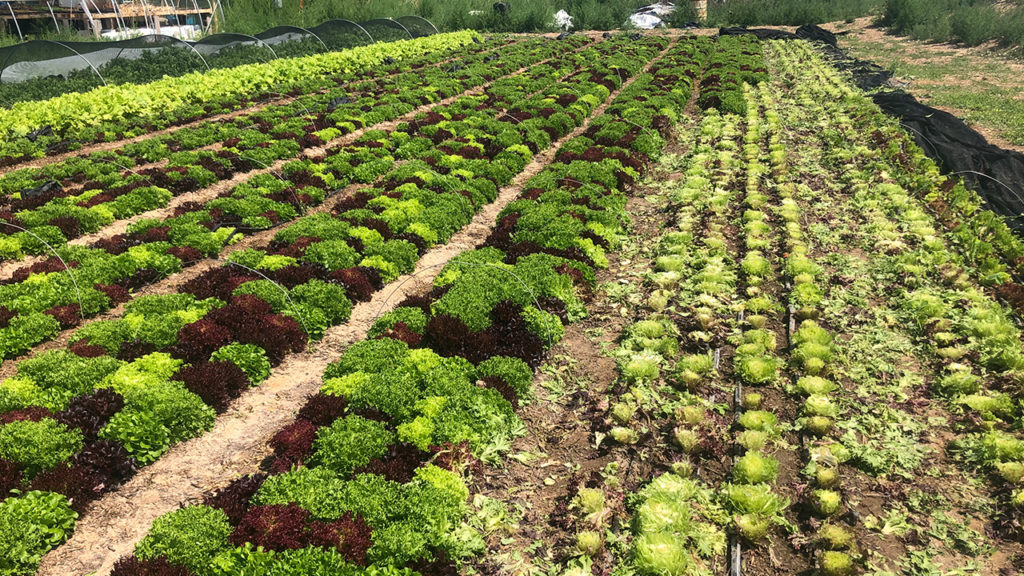
5. Integrating animals
Recognizing the contributions of animals is part of the full cycle of regenerative organic agriculture. Even for farmers who do not raise animals of their own, well-composted manure, bone meal, blood meal, and fish meal are all fertilizers that bring nitrogen, phosphorous, and potassium into the system. Nitrogen is like protein for plants, says Mat.
Mat encourages gardeners not to be afraid of fertilizers, even if you aren’t comfortable using animal sources. But take care to choose organic fertilizers, and not synthetic. Organic fertilizers are slow-release throughout the growing season, instead of the fast release one-and-done synthetic fertilizers that need frequent reapplication. However, he cautions not to overdo it. An 8-4-4 or 4-4-4 (referring to the nitrogen-phosphorous-potassium levels) is sufficient. Higher numbers are not better, and many novice gardeners use too much or too high of numbers.
Organic matter is the best fertilizer long term. Compost, says Mat, is like the glue for the soil. It gives nitrogen and potassium and holds everything together.
Application for the home garden:
- Source organic compost or manure from a farmer near you. Farmers are often looking to get rid of it and it is super valuable to your garden! They may sell it or donate it. A mushroom farm near me is famous in the region for giving away mushroom compost. The plants say, “Yum!”
- Utilize moderate strength organic fertilizers at the beginning of the growing season.
- Give a heavy dose of compost once a year.
More tips from Mat’s years building up his land:
- Learn from others. Befriend the team at your local nursery and talk to the farmers at your local farmer’s market. If you’re experiencing a problem in your garden, they’ve probably encountered it, too. There is so much variance from region to the next, even from one acre to the next, that local advice is far better than what you find online.
- Learn from yourself. Take notes from your experiences. No need to learn the same thing twice. Take pictures and record in journals what has worked and what has not.
- Shade cloth is another helpful tool to keep plants cool in the heat of summer and to protect plants during hailstorms.
- Organic makes a difference when buying seeds and seedlings. For one thing, it matters who you are supporting, and the more the buying public supports organic practices, the more organic availability there will be. Secondly, plants grown by organic practices are stronger and more resilient than those grown dependent on synthetic input. Once that input disappears, the plants wither.
Whether your garden consists of a single pot on the patio or an acre beside your house, think regeneratively. Think of gardening not as plant-growing but as soil-building. Just like we must nurture our own souls and spirits before the visible parts of ourselves are productive and strong, we must nurture the hidden part of our garden so that the visible plants are healthy and fruitful. Think of your soil as a living thing. It is.
Inspire us with what you’re planting together. Got another gardening tip to share?
Want to learn more?
For gorgeous, inspiring, and seriously educational books on this topic, check out The Living Soil Handbook by Jesse Frost and No Dig Gardening by Charles Dowding. Now I want to be a farmer. There are many other great resources on regenerative and soil-focused farming and gardening. Do you have one to recommend?
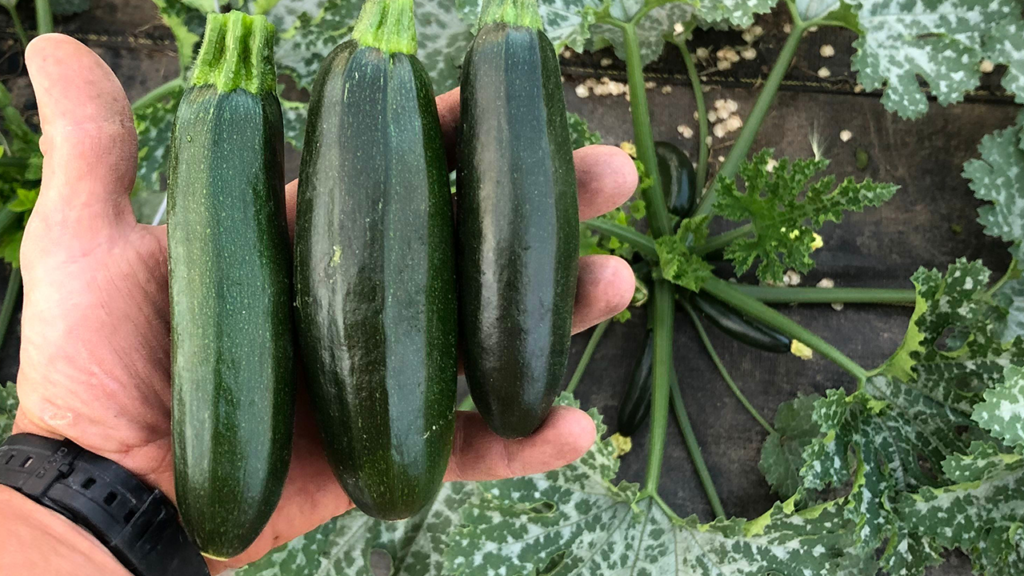





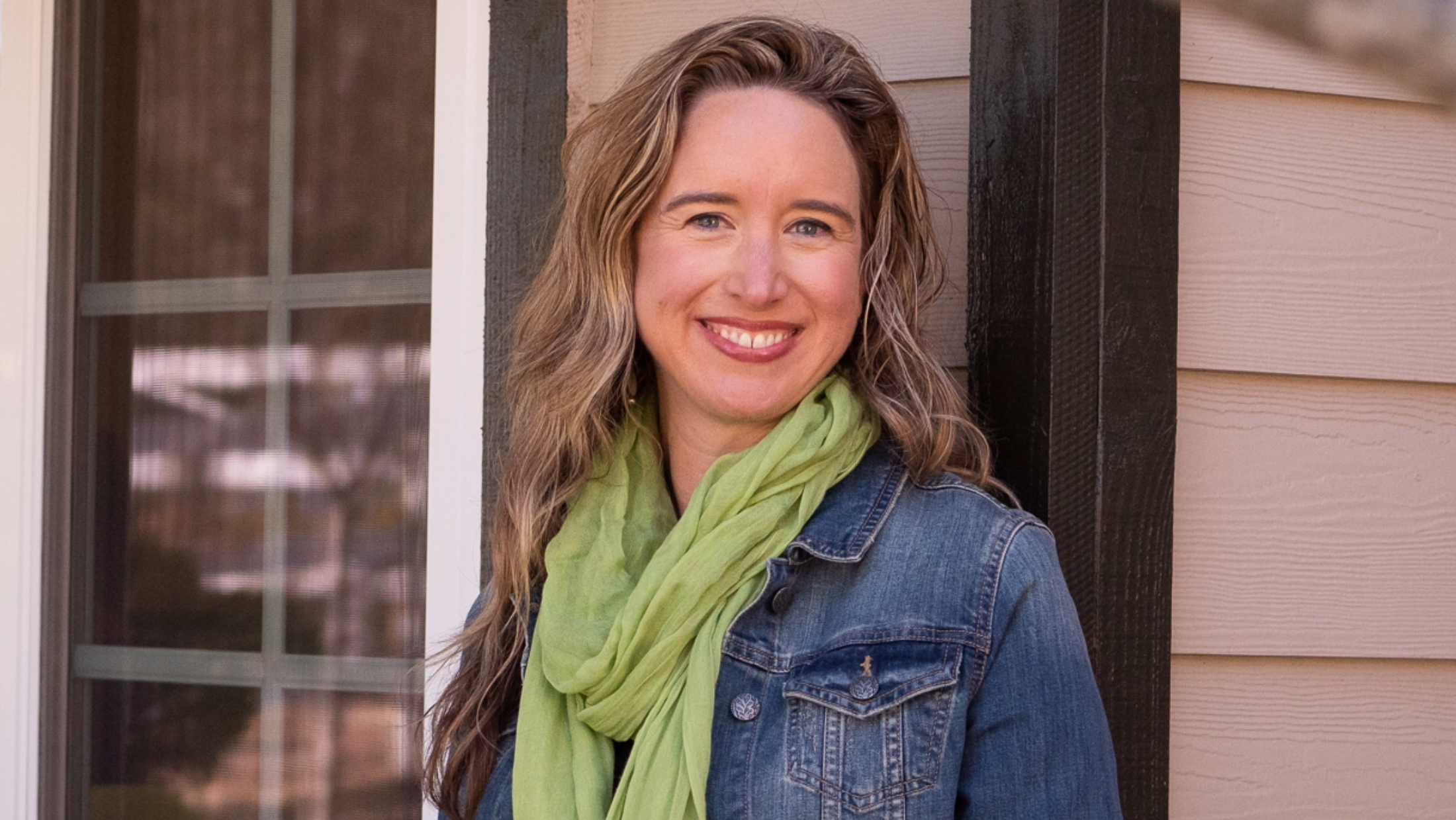

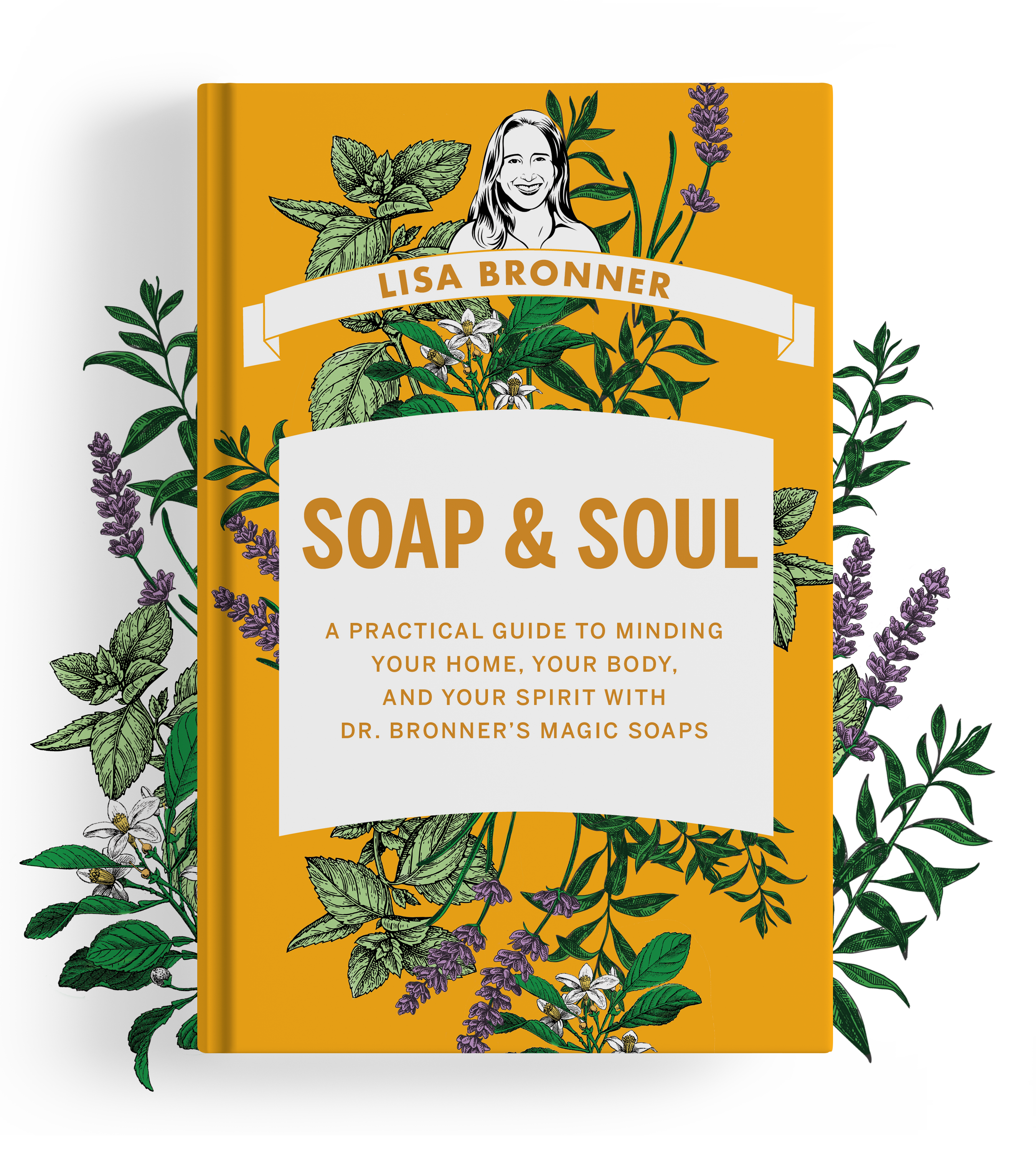
I remember when I was young, in a family of six and budgets tight, my dad used to recycle the grass clippings from the mower bag and spread into the shrub and flower beds. Great alternative for the more expensive mulch.
Hi Lisa, it is really fantastic how you know how to bring this remarkable concept from worldwide sustainable agriculture into you own garden! At the same time, this is a perfect way to bring the topic closer to people who no longer know where, for example their food comes from… It is really impressive and very remarkable how the entire Bronner’s family resonates with these themes!
Thanks so much, Barbara! Your words mean a lot!
They must have a lot of water available. You can’t plant lettuce that close without at least 10 gpm. Gardening like this is for the just-over-broke market farmer. The Hopi planted corn 8 feet apart from each other corn plants in the dry dry southwest. No average person had that much land to dry farm.
I suggest investigating dry land gardening if you don’t have adequate water supply .
Enjoyed the article and information that was well written. I’m a home organic gardener. Maybe I’m wrong but I don’t use any plastic or synthetic landscape cloth. The exercise of weeding is good for me and the weeds feed the soil. I use a bird feeder to attract birds and have had little issues with insects. The birds get a few of the berries but leave everything else alone.
Hi Jimmy- That’s great! It sounds like your garden is full of life!
Excellent, excellent article, thank you very much from an organic gardener.
A great read! It was only yesterday that my husband said let’s till this weedy area up. I said tilling destroys the soil structure. Let’s just rake them under instead. I love how more and more people are leaving chemicals behind and gardening with cover.
Like the tips. Am forwarding this article to my gardening friends.
Are you saying that when I pull weeds, leave their root in the ground? Won’t they come back?
Hi Lenna- It depends on the type of weed. Some are resilient and will likely re-grow from any stub left in the ground. But you can also experiment and see what happens!
I have used landscape fabric in the past, and though it works ok for most of the season, it’s pretty deteriorated by summer’s end, and I end up with bits of this plastic remaining in the soil, which I don’t like. Are there greener or more soil-friendly alternatives? I’ve even thought of using canvas cloth, or something similar.
Hi Amy- I reached out to Mat on this and he’s had success with a woven material from Dewitt. It’s held up for 5 New Mexico summers and counting. He also suggested straw as another great option.
This is such a great post with so many helpful tips. We did not know you should leave the roots in the soil.
Thank you! 🙂
Hi Arti- I’m so glad this topic resonated with you!
Thank you! This was fantastic! I appreciate the information, insight, list of takeaways, and links to other beneficial information. My garden is languishing with weeds and plants gone to seed. This helps me consider how to approach creating a summer garden. Thanks again!
Hi Anita- It’s great to hear this topic has inspired you! May your garden be bountiful!
I have to disagree with regards to starting a garden without tilling. It has been my experience that this is not a good way to begin, as the weeds take over during the first year or two at least. I feel it is crucially important to either use keyhole gardening and start by composting in raised beds, or to start by hacking off the top layer of sod and then rototilling, once. Only once. You shouldn’t have to do it more than once, but fluffing up the soil every couple years might be necessary. Then adding a whole lot of manure, compost, and vegetative matter to the whole thing regularly and in large amounts is helpful. But when weeding, you pull ’em up by the roots or you don’t garden at all. Otherwise, you wind up needing to use pesticides and who needs that. Source: from Israeli farming family.